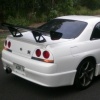Educated Guess At The Final Tune Results
Announcements
-
Similar Content
-
Latest Posts
-
Was not scared..... 😬😬😬 20250222_153105.mp4 Now what.......?
-
By Watermouse · Posted
I recently got their dbw 74mm throttle body and pedal kit. It is sensational quality especially the wiring harnesses. Unfortunately I can’t answer u about the fitment to stock inlet manifold as I’m going Rahjab Racing forward plenum. Only one thing to be careful of is understand u have to pay gst and import fees if your purchase is over $1,000 in one shipment. -
yeah i agree paint match stops it from standing out so much, oh that's actually really good to know i was wondering if it would help with air flow now actually having an outlet in the bonnet. Will have to focus on ducting into and out of the radiator now to make the most of it.









Recommended Posts
Create an account or sign in to comment
You need to be a member in order to leave a comment
Create an account
Sign up for a new account in our community. It's easy!
Register a new accountSign in
Already have an account? Sign in here.
Sign In Now